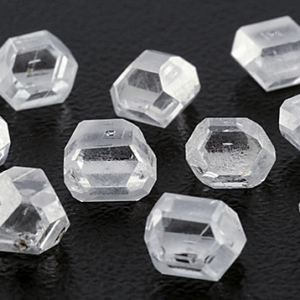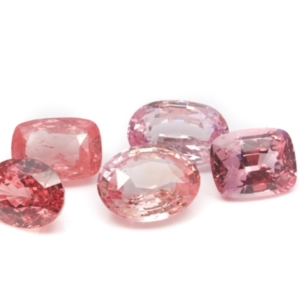Pierre Lingam – properties, virtues & benefits
The Lingam stone is an object of worship and meditation stemming from Hindu tradition. Ovoid in shape and usually made of stone, it symbolizes the creative force of the universe and is used to promote sPirituality and inner balance. Discover its origins and meanings in this article.
LINGAM CHARACTERISTICS
- Chakra: Sacred.
- Properties: SPiritual, energetic, balancing.
- Astrology: Sun.
- Zodiac: Leo.
- Elements: Fire.
- Colors: Red, orange.
- Hardness: 7 (on Mohs scale).
- Chemical Formula: Magnesium iron silicate.
- Associated god: Shiva.
PIERRE LINGAM – HIS STORY
The term “slinkan” is the origin of the name “lingam”. According to philosopher Jozef Schmidt, these terms imply a variation in size that is observed in slugs, snails, and human genitalia. In Slavic languages, the word “lingam” is often used to describe slugs. In India, this object is worshipped and represents the miraculous characteristics of human genitalia. Its phallic geometry evokes the male genital organ and, in combination with the “yoni” which designates the female genital organ, it represents the clitoris, an unusual representation in other religions. This symbol represents the ambivalence of the god, being both ascetic and renunciant, but also a major figure in Tantrism. The lingam has three distinct meanings as a sign, phallus or symbol of Shiva. There are two types of lingam, the “manuṣi liṅga” created artificially by man and the “svayambhu-liṅga” which are natural elements venerated as lingam, such as certain pebbles.
One Piece of information commonly associated with the lingam stone is its relationship with the goddess of femininity, Shakti, and her creative potential through the yoni. The union of lingam and yoni represents, as with Shiva, the totality of the world. Lingam stones come in many shapes and sizes, from a simple pebble balanced with a painted symbol of Shiva, to a phallus clearly symbolized in all temples and sacred places, sometimes even with the god’s head carved into it. The rounded upper part is called lingamani or manikâ.
During the puja ritual, the stone is sprinkled with milk, honey or clarified butter, and offerings of flowers, fruit and sweets are offered to it. Active lingam stones in temples must be kept moist.
LINGAM STONE – ITS ORIGIN AND COMPOSITION
The crystalline structure of lingam is considered mysterious due to its complexity. It is mainly composed of magnesium, silicon dioxide, iron, iron oxide and magnesium. It also contains agate, basalt, jasper and quartz, and belongs to the jasper category of sedimentary rocks. Its hardness varies, reaching a maximum of 7 on the Mohs scale. Its ovoid shape can be interpreted as a symbol of Yin and Yang.
In India, lingam stones were traditionally quarried even in times of drought, but the construction of a water dam has had a severe impact on the stones. They are now covered in water, making them difficult for extractors to access, as a great depth separates them from the surface since the dam was built.

LINGAM STONE – VERTIES AND PROPERTIES
PHYSICAL LINGAM
On the emotional level, the lingam stone helps self-investigation to identify the roots of suffering and get rid of anything unnecessary. It is particularly useful for treating emotional pain linked to various psychic impregnations and for working on early childhood experiences. Its shape represents the masculine and its colors represent the feminine, helPing to balance and harmonize the being. Wearing this stone activates the sacral chakra and rebalances energy.
On a sPiritual level, lingam stone promotes harmonization of mind, soul and heart, which is beneficial for meditation by providing peace, power and prosperity. It is also ideal for sacredness and optimizing astral travel.
In lithotherapy, the lingam stone is one of the most effective forms due to the combination of its materials, which confer various virtues. It is suitable for all signs of the zodiac and acts on several chakras, including the sacral, heart, crown and third eye chakras, as well as the second chakra. It attracts love to those around it, helps strengthen bonds and has calming properties to combat conflict and promote serenity. People who are stressed or lack insPiration can wear this stone to refocus on their true being. Men who use it are stronger and more serene in dealing with life and everyday problems. In short, this stone helps to turn towards others and create an atmosphere of love.
PHYSICAL LINGAM
On the physical level, the lingam stone is ideal for stimulating and invigorating when vitality is lacking. It helps combat fatigue and low energy, particularly in the sphere of sexuality, in both men and women. For women, it can help reduce pain and ease tension associated with premenstrual congestion. It can also help women who have difficulty with masculine energy.
Because of its nature, the lingam stone can regulate positive vibrations and help focus on the essence of things. It also influences the body’s electromagnetic field, increasing it and regulating the influences of underground sources and their telluric effects. This stone can be placed both inside and outside the home or workplace to regulate and rebalance the energy of the space. For an area of 4 km², a 30 cm lingam stone is enough to cover the entire space. It can be placed in any room of the house or garden, and can help manage sexual problems and blockages. All in all, this stone is a powerful ally for improving energy and vitality.

STONE LINGAM – CLEAN AND RECHARGE
Lingam stone can be cleansed and recharged to maintain its energy and beneficial properties. Here are some cleaning and recharging methods that can be used:
Cleaning:
- Salt water: immerse the Lingam stone in salt water for several hours, then rinse with clear water.
- Fumigation: pass the Lingam stone through incense or sage smoke to purify it.
- Earth: bury the Lingam stone in the earth for a day or more, then clean with a soft brush.
Charge:
- Sunlight: expose the Lingam stone to direct sunlight for a few hours.
- Moonlight: expose the Lingam stone to the light of the full moon for an entire night.
- Crystals: place the Lingam stone on a cluster of crystals (such as amethyst or quartz) for several hours to recharge.
It is recommended to clean and recharge your Lingam stone regularly, depending on how often you use it.
WHERE DOES THE NAME LINGAM COME FROM?
The term “lingam” comes from Sanskrit, an ancient sacred language of India, and is used to describe a symbol that represents the creative power of the universe in Hindu tradition. The word “lingam” comes from the Sanskrit root “li”, meaning “to take form” or “to manifest”. Thus, the lingam is often associated with the masculine energy and creative power of Shiva, one of the principal deities of the Hindu religion. In this tradition, the lingam is considered an object of veneration and meditation that can help foster sPirituality and inner balance.
WHICH CHAKRA DOES LINGAM ACT ON?
The lingam is traditionally associated with the sacral chakra, also known as Swadhisthana in Sanskrit. This chakra is located in the pelvic region and is considered to be linked to creativity, sexual energy, vitality and the ability to feel pleasure and joy. Using the lingam in meditation and sPiritual practice can help balance and stimulate the sacral chakra, promoting emotional and physical well-being.
WHICH ASTROLOGICAL SIGN IS ASSOCIATED WITH LINGAM?
The astrological sign associated with the lingam is Leo. Leo is ruled by the Sun, which is also the planet associated with the lingam in Hindu astrology. Leo is considered a sign that expresses creativity, vitality, pride and generosity, qualities that are also associated with the lingam. People born under the sign of Leo may thus feel particularly drawn to the energy of the lingam, and can benefit from its energetic properties as a tool for meditation and healing.
SUMMARY OF THE LINGAM STONE
The lingam stone is a sacred symbol in Hinduism, representing the male deity Shiva in his phallic form. The lingam stone is usually shaped like a cylinder or Pillar, with a rounded end representing Shiva’s head and an oval base representing the yoni or female organ. The lingam stone is often worshipped in Hindu temples, where it is bathed in water, milk and other offerings. It is also considered a source of life force and fertility. Lingam stones can be made from a variety of materials, including quartz, basalt, marble and jade.

